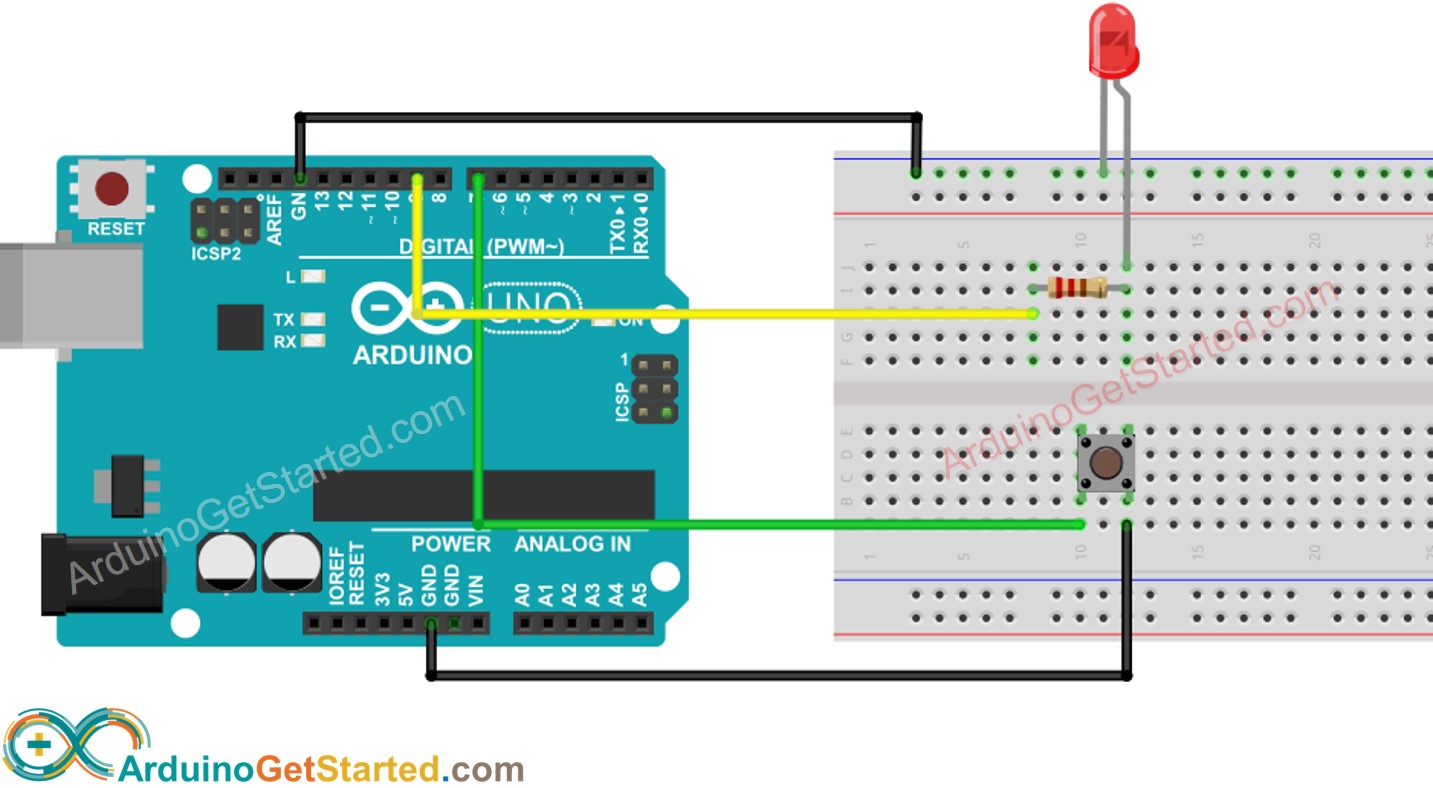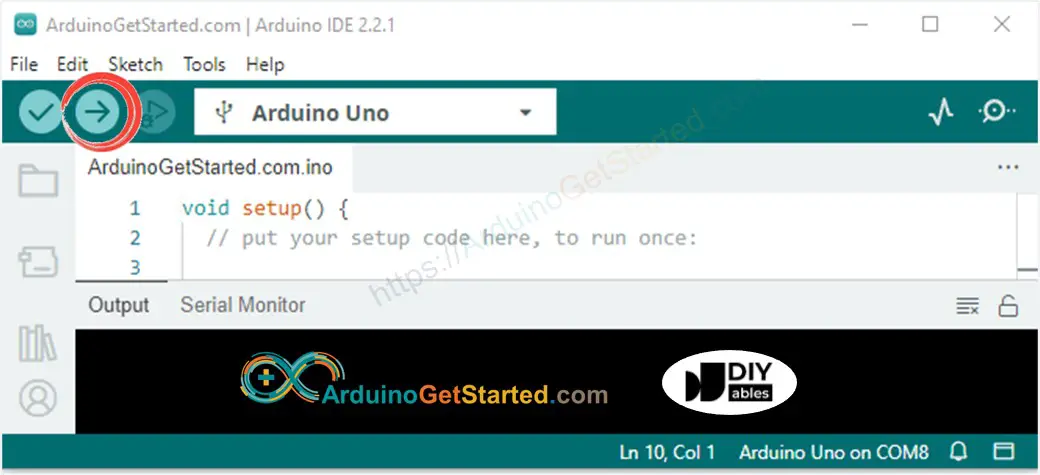ezOutput Library - Pulse Example
Hardware Required
Disclosure: Some links in this section are Amazon affiliate links. If you make a purchase through these links, we may earn a commission at no extra cost to you.
Additionally, some links direct to products from our own brand, DIYables .
Additionally, some links direct to products from our own brand, DIYables .
Buy Note: To simplify the wiring process, we recommend using the LED Module, which comes with a built-in resistor.
About ezOutput Library
- Refer to Arduino - ezOutput Library Reference
Wiring Diagram

This image is created using Fritzing. Click to enlarge image
Arduino Code
Quick Steps
- Install ezOutput library. See How To
- Connect Arduino to PC via USB cable
- Open Arduino IDE, select the right board and port
- On Arduino IDE, Go to File Examples ezOutput 08.Pulse example
/*
Created by ArduinoGetStarted.com
This example code is in the public domain
Tutorial page: https://arduinogetstarted.com/tutorials/arduino-output-library
This example create a high pulse when a button is pressed
*/
#include <ezButton.h> // ezButton library https://arduinogetstarted.com/tutorials/arduino-button-library
#include <ezOutput.h> // ezOutput library
ezButton button(7); // create Button object that attach to pin 7;
ezOutput led(9); // create ezOutput object that attach to pin 9;
void setup() {
button.setDebounceTime(50); // set debounce time to 50 milliseconds
led.low();
}
void loop() {
button.loop(); // MUST call the loop() function first
led.loop(); // MUST call the loop() function first
if (button.isPressed()) {
if (led.getState() == LOW) {
led.pulse(1000, 250); // 250 milliseconds delay, 1000 milliseconds HIGH pulse
}
}
}
- Click Upload button on Arduino IDE to upload code to Arduino

- Press and release the button some time
- See LED's state
Code Explanation
Read the line-by-line explanation in comment lines of source code!
